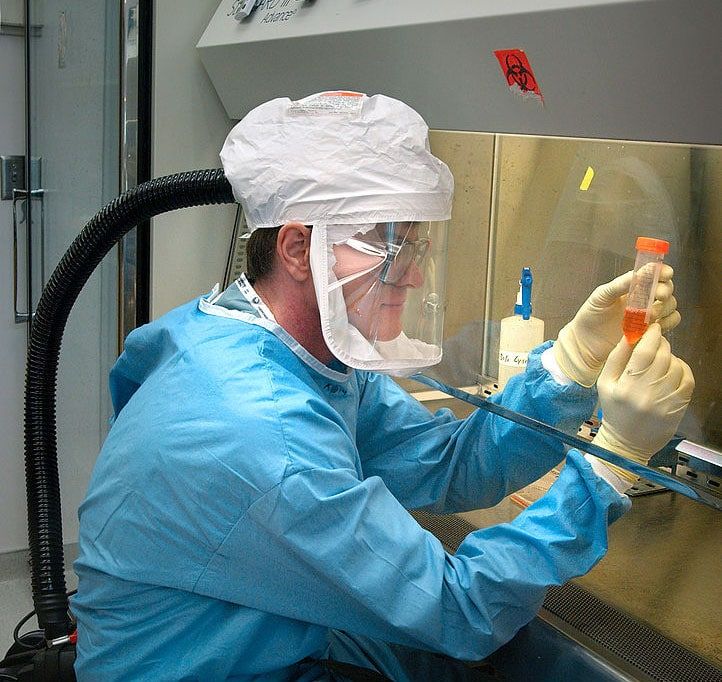A time of unprecedented danger:
It is 90 seconds to midnight
2023 Doomsday Clock Statement
Science and Security Board
Bulletin of the Atomic Scientists
Editor, John Mecklin
January 24, 2023

A daunting array of biological threats
The existing biological threat landscape makes clear that the international community needs to improve its ability to prevent disease outbreaks, to detect them quickly when they occur, and to respond effectively to limit their scope.
Devastating events like the COVID-19 pandemic can no longer be considered rare, once-a-century occurrences. The total number and diversity of infectious disease outbreaks has increased significantly since 1980, with more than half caused by zoonotic diseases (that is, disease originating in animals and transmitted to humans). As such, zoonoses put the human population at significant risk for pandemics. There is immense, uncharacterized diversity within the 26 virus families and the many phyla of bacteria and other microbes known to infect humans. The world’s ability to predict which of these viruses and microbes are most likely to cause human disease is woefully inadequate.
Laboratory accidents continue to occur frequently. Opportunities for human error, limited understanding of novel disease characteristics, lack of local government knowledge about the types of research occurring in labs in their jurisdictions, and confusion about lab safety requirements all challenge current laboratory biosafety and biosecurity programs. It is also easier now than ever to obtain and modify pathogens, increasing the chances of pandemics caused by laboratory accidents.
We live in a time of revolutionary advances in the life sciences and associated technologies. Researchers can engineer living things to acquire new traits with increasing ease and reliability, especially viruses that can be synthesized de novo in the laboratory. But oversight regimes, strategies for risk assessment and risk mitigation, and the establishment of agreed-upon norms for scientific pursuit lag further and further behind, as biological science and technology advance faster and faster. Biological information is increasingly a double-edged sword: It empowers anyone with requisite capabilities to work with and produce dangerous pathogens, even as it enables remarkable advances for good in biology-based sciences and technology. Leaders around the world must confront the possibility of global catastrophic biological risks—biological events that could lead to sudden, extraordinary, widespread disasters—that test or exceed the collective capability of national and international governments and the private sector to control.

In its 2022 report, Adherence to and Compliance with Arms Control, Nonproliferation, and Disarmament Agreements and Commitments, the US State Department assessed that: Russia maintains an offensive biological weapons program; North Korea has produced biological agents and maintains a program to weaponize them for use in warfare; Iran has not abandoned its intent to conduct research and development of biological agents for offensive uses; and China has engaged in dual-use activities that may be in violation of the Biological Weapons Convention.
Recent events—including especially the Russian invasion of Ukraine and Russia’s continuing disinformation efforts in regard to biological weapons—have changed the landscape of biological threats. The risk that Russia will engage in biological warfare increases as conditions in Ukraine become more chaotic, weakening norms of warfare. Escalation of the war in Ukraine poses many potentially existential threats to humanity; one of them is biological.
No matter the potential source—natural, accidental, or intentional—there are steps national leaders can take to reduce catastrophic biological risks. Every country must make greater investments in public health. Every country should eliminate biological weapons and dismantle programs producing them. And all countries can vastly improve the world’s ability to identify outbreaks before they become epidemics and pandemics if they invest in disease surveillance systems; share data, analytics, and intelligence on biological events; and develop the ability to identify and attribute biological events quickly.
Pathogens are not stopped by national borders. Debilitating illness, widespread death, and disease-induced disaster can be avoided if countries around the world cooperate on global health strategies and make investments in science, technology, research, and development in the biosecurity sector.
Read the 2023 Doomsday Clock statement »
Learn more about how each of the Bulletin's areas of concern contributed to the setting of the Doomsday Clock this year:
About the Bulletin of the Atomic Scientists
At our core, the Bulletin of the Atomic Scientists is a media organization, publishing a free-access website and a bimonthly magazine. But we are much more. The Bulletin’s website, iconic Doomsday Clock, and regular events equip the public, policy makers, and scientists with the information needed to reduce manmade threats to our existence. The Bulletin focuses on three main areas: nuclear risk, climate change, and disruptive technologies, including developments in biotechnology. What connects these topics is a driving belief that because humans created them, we can control them. The Bulletin is an independent, nonprofit 501(c)(3) organization. We gather the most informed and influential voices tracking manmade threats and bring their innovative thinking to a global audience. We apply intellectual rigor to the conversation and do not shrink from alarming truths.
The Bulletin has many audiences: the general public, which will ultimately benefit or suffer from scientific breakthroughs; policy makers, whose duty is to harness those breakthroughs for good; and the scientists themselves, who produce those technological advances and thus bear a special responsibility. Our community is international, with half of our website visitors coming from outside the United States. It is also young. Half are under the age of 35.
Learn more at thebulletin.org/about-us.